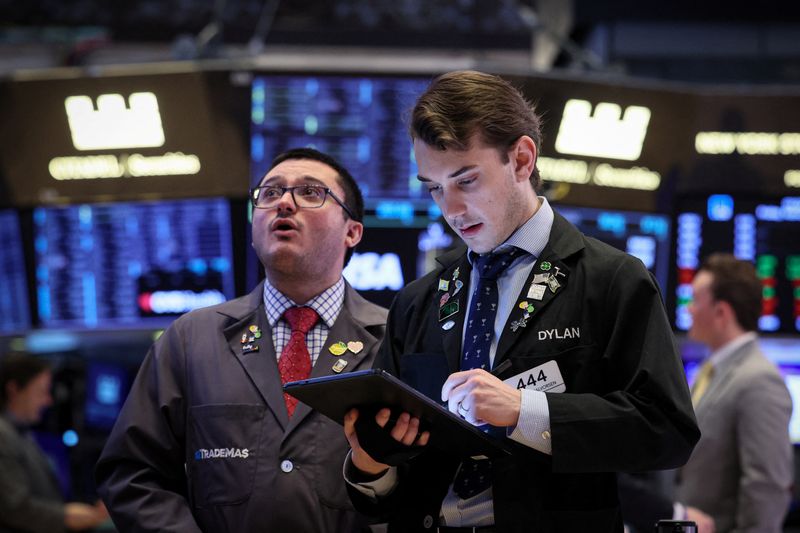Follow us on LinkedIn
Do you want to learn about quantitative finance and algorithmic trading? This comprehensive guide is perfect for beginners who want to learn about the basics of these topics. We will discuss what quantitative finance is, and we will also talk about different types of algorithms that are used in trading. We will also provide a few examples of how these algorithms are used in practice. Are you ready to get started?
What is quantitative finance?
Quantitative finance is the study of financial data using mathematical and statistical techniques. This field focuses on modeling and predicting financial outcomes, and it is often used by banks, hedge funds, and other financial institutions.
What is algorithmic trading?
Algorithmic trading is a type of trading that relies on computer algorithms to make trading decisions. These algorithms are designed to analyze financial data and make trades based on certain patterns or trends. Many algorithmic traders use high-frequency trading strategies, which involve making a large number of trades in a short period of time.
How are quantitative finance and algorithmic trading related?
Quantitative finance and algorithmic trading are both concerned with the analysis of financial data. However, quantitative finance focuses more on modeling and predicting financial outcomes, while algorithmic trading focuses on using computer algorithms to make trades based on certain patterns or trends.
What are some examples of algorithms that are used in trading?
Some common algorithms that are used in trading include momentum-based strategies, mean reversion strategies, and arbitrage strategies. Momentum-based strategies involve buying assets that are rising in price and selling assets that are falling in price. Mean reversion strategies involve buying assets that are undervalued and selling assets that are overvalued. Arbitrage strategies involve taking advantage of price discrepancies in different markets.
What are some benefits of algorithmic trading?
Algorithmic trading can provide a number of benefits, including the ability to execute trades quickly, the ability to make high-frequency trades, and the ability to test trading strategies before implementing them. Additionally, algorithmic trading can help to reduce emotions in trading, as trades are executed based on pre-determined rules rather than on emotions.
What are some risks of algorithmic trading?
Algorithmic trading can also pose some risks, including the potential for errors in the algorithms, the potential for high levels of market volatility, and the possibility of flash crashes. Additionally, algorithmic trading can be used to manipulate markets, and it can also be difficult to monitor and regulate.
How is quantitative finance used in algorithmic trading?
Quantitative finance is used in algorithmic trading to develop and test trading strategies. Additionally, quantitative finance can be used to identify market trends and to make predictions about future market movements.
What are some challenges faced by quantitative finance?
Some challenges faced by quantitative finance include the need for accurate data, the need for sophisticated models, and the need for computing power. Additionally, quantitative finance can be complex and time-consuming, and it can be difficult to communicate results to non-experts.
What are some benefits of quantitative finance?
Benefits of quantitative finance include the ability to make more informed investment decisions, the ability to develop and test trading strategies, and the ability to identify market trends. Additionally, quantitative finance can help to improve risk management and to make better use of financial data.
The bottom line
Quantitative finance and algorithmic trading are both concerned with the analysis of financial data. However, quantitative finance focuses more on modeling and predicting financial outcomes, while algorithmic trading focuses on using computer algorithms to make trades based on certain patterns or trends. Algorithmic trading can provide a number of benefits, including the ability to execute trades quickly, the ability to make high-frequency trades, and the ability to test trading strategies before implementing them. Additionally, algorithmic trading can help to reduce emotions in trading, as trades are executed based on pre-determined rules rather than on emotions. While there are some risks associated with algorithmic trading, such as the potential for errors in the algorithms, the potential for high levels of market volatility, and the possibility of flash crashes, the benefits of algorithmic trading may outweigh the risks. Quantitative finance can be used to develop and test trading strategies, and it can also be used to identify market trends and make predictions about future market movements. We hope this post is helpful. Thanks for reading.
Further questions
What's your question? Ask it in the discussion forum
Have an answer to the questions below? Post it here or in the forum




